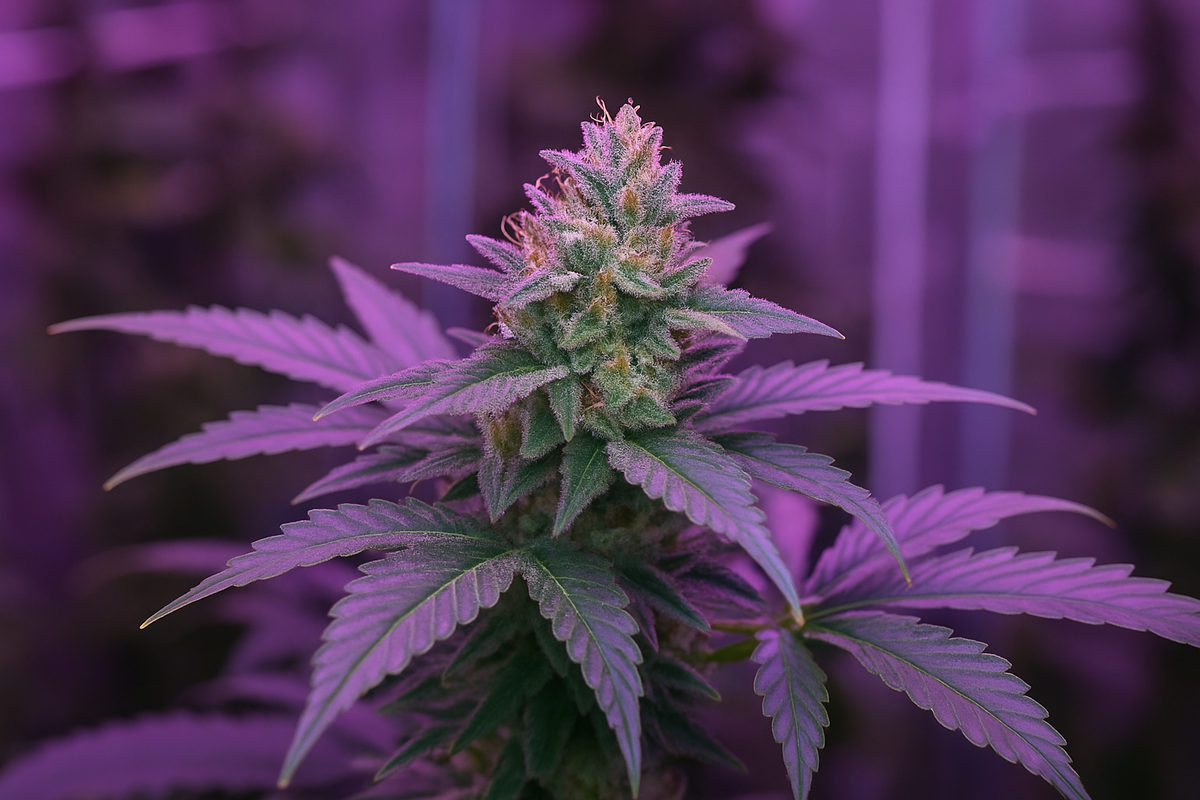
When it comes to cannabis genetics, most people are familiar with words like “strain”, “hybrid”, or “phenotype”. But lately, another term has been making the rounds in cultivation circles - polyploid cannabis, and more specifically, triploid cannabis.
These scientific-sounding words might seem intimidating, but the concepts are actually quite simple once broken down. And they could have big implications for how cannabis is grown and sold in the future.
The Basics: What Does “Ploid” Mean?
Every living thing, from humans to plants, has chromosomes, tiny packages of DNA that carry genetic information. The number of chromosome sets a plant has is described by the term ploidy.
Most plants, including traditional cannabis, are diploid. That means they have two sets of chromosomes - one from each parent. This is what allows them to reproduce normally, making fertile seeds that grow into the next generation.
But sometimes, through natural mutations or human intervention, a plant can end up with extra sets of chromosomes. When this happens, it’s called polyploidy - “poly” meaning many, and “ploid” referring to chromosome sets. So, polyploid simply means “many sets of chromosomes”.
Polyploid Cannabis Explained
In cannabis, scientists and breeders have found ways to produce plants that have more than the usual two sets of chromosomes. These might be tetraploid plants (four sets, 4n), or triploid plants (three sets, 3n). Together, these are referred to as polyploid cannabis.
Why would anyone want to do that? Because in nature, polyploid plants often show some pretty exciting traits. They may have:
- Larger cells, leading to thicker stems and bigger leaves.
- More robust growth, because extra genetic material can mean extra vigour.
- Potentially higher yields or improved resilience to pests and diseases.
Think of it like a plant that’s had its genetic “volume” turned up. Of course, not every polyploid plant performs better, but in some species, including cannabis, the potential is there.
So What About Triploid Cannabis?
Triploid cannabis is a specific type of polyploid cannabis. While “polyploid” means many sets of chromosomes, “triploid” means three sets exactly.
Triploid plants are made by crossing two types of parents:
- A diploid plant (the normal two sets of chromosomes)
- A tetraploid plant (four sets of chromosomes)
When you cross them, the offspring usually ends up with three sets (3n). This uneven number makes triploid plants unable to reproduce normally. They can grow and flower beautifully, but they usually don’t make fertile seeds.
Why Sterility Can Be a Good Thing
At first glance, that might sound like a disadvantage. Why would growers want sterile plants? But in cannabis cultivation, it’s actually a big advantage.
In traditional grows, one of the biggest headaches is preventing pollination. If female plants are pollinated by males, they stop putting energy into growing resinous flowers and start making seeds instead. This is why most growers use feminised seeds or clones - to ensure no accidental seeding.
Triploid cannabis plants take this a step further. Because they’re naturally sterile, they can’t produce seeds even if pollinated. This makes them ideal for producing sinsemilla - the seedless, potent flowers that most consumers prefer. It also ensures more consistent flower quality and cannabinoid levels, since there’s no variation caused by unwanted breeding.
In other crops like bananas, watermelons, and grapes, triploid versions have long been used to create the seedless varieties we enjoy today. Now, cannabis breeders are exploring similar possibilities.
The Potential Benefits of Triploid Cannabis
Triploid cannabis could change how large-scale cultivation is done in several ways:
- Seedless production: No worries about stray pollen ruining a crop.
- Uniform plants: Greater consistency from plant to plant.
- Improved yields: Some studies suggest triploids can grow larger flowers or denser buds.
- Reduced stress: Since plants don’t divert energy into reproduction, they may focus on producing cannabinoids and terpenes.
However, this is still an emerging area of research. Not all triploid plants show dramatic improvements, and stability can vary depending on how the genetics were created. Producing reliable triploid and tetraploid breeding lines requires careful laboratory work.
Where the Research Is Heading
While some breeders are already experimenting with triploid cannabis, it’s not yet mainstream. It takes time to test how these plants perform under different growing conditions and to ensure they stay stable from one generation to the next. But the early results are promising, particularly for large-scale growers who want to avoid seed contamination and ensure uniform, high-quality flower.
In short, polyploid cannabis refers to any plant with extra sets of chromosomes, while triploid cannabis is one specific form - a three-set version that’s usually sterile. The goal of both approaches is to unlock new growth potential, improve consistency, and possibly enhance the plant’s overall performance.

In Summary
Polyploidy isn’t new in agriculture.We’ve been using it for decades to grow seedless fruits and stronger crops. Now cannabis is following the same path, combining plant science with cultivation art to refine the plant we know and love.
So, next time you hear someone mention “triploid cannabis”, think of it as seedless cannabis created through smart science, not a GMO, but a natural evolution in how we can make the plant even better.





